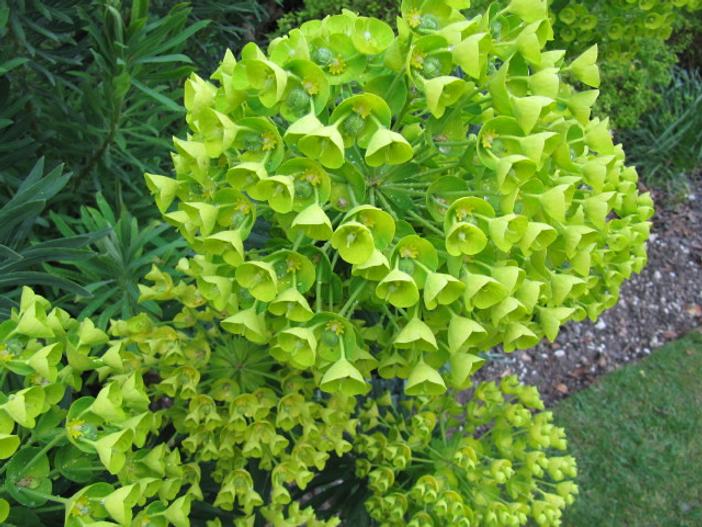Mediterranean Spurge
(Euphorbia characias subsp. wulfenii)
Mediterranean Spurge (Euphorbia characias subsp. wulfenii)
/
/

Leonora (Ellie) Enking
CC BY-SA 2.0
































Estimated Native Range
Summary
Mediterranean Spurge is appreciated for its drought tolerance and its ability to thrive in poor soils, making it a low-maintenance choice for gardeners. It is often used in rock gardens, coastal gardens, and as a structural plant in mixed borders due to its unique form and texture. It requires well-drained soil and can tolerate coastal conditions. While it prefers full sun, it can also grow in part shade. Gardeners should be cautious as the sap is toxic and can cause skin irritation. It is resistant to most pests and diseases but can be prone to root rot if overwatered.CC BY-SA 4.0
Plant Description
- Plant Type: Subshrub
- Height: 2-3 feet
- Width: 1.5-2 feet
- Growth Rate: Moderate
- Flower Color: Green, Yellow
- Flowering Season: Spring, Summer
- Leaf Retention: Evergreen
Growth Requirements
- Sun: Full Sun, Part Shade
- Water: Medium
- Drainage: Medium
Common Uses
Bank Stabilization, Bee Garden, Bird Garden, Border Plant, Butterfly Garden, Deer Resistant, Drought Tolerant, Groundcover, Low Maintenance, Potted Plant, Rabbit Resistant, Rock Garden, Salt Tolerant, Showy Flowers, Street Planting
Natural Habitat
Native to the Mediterranean region, including Southern Europe and the Aegean Islands
Other Names
Common Names: Euphorbe Characias, Spurge
Scientific Names: , Euphorbia characias subsp. wulfenii, Euphorbia wulfenii, Euphorbia sibthorpii, Euphorbia melapetala, Euphorbia characias var. melapetala, Euphorbia messeniaca, Euphorbia lycia, Euphorbia melapetala var. leiocarpa, Tithymalus melapetalus
GBIF Accepted Name: Euphorbia characias subsp. wulfenii (Hoppe ex W.D.J.Koch) Radcl.-Sm.